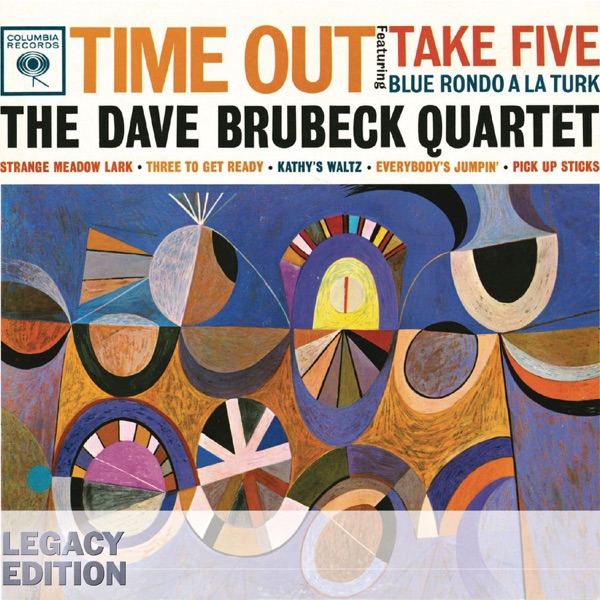The "Time Out 50th Anniversary Legacy Edition" is a celebratory re-release of one of the most important and commercially successful jazz albums of all time.
Here’s a breakdown of its significance:
About the Original Album: "Time Out" (1959)
* **Artist:** The Dave Brubeck Quartet, consisting of Dave Brubeck (piano), Paul Desmond (alto saxophone), Eugene Wright (bass), and Joe Morello (drums).
* **Core Concept:** The album was a radical experiment for its time. Brubeck had returned from a U.S. State Department-sponsored tour of Eurasia, where he was inspired by the complex and unusual time signatures he heard in traditional folk music. The entire album is built around this concept, moving beyond the standard 4/4 or 3/4 time common in jazz and pop.
* **Iconic Tracks:**
* **"Take Five":** Ironically, the most famous track from the album (and one of the best-selling jazz singles ever) was not written by Brubeck, but by saxophonist Paul Desmond. It's written in 5/4 time and features a legendary drum solo by Joe Morello.
* **"Blue Rondo à la Turk":** Written by Brubeck, this track is based on a Turkish rhythm in 9/8 time, which is cleverly grouped into a (2+2+2+3) pattern that transitions into a more conventional 4/4 swing for the solos.
Cultural Relevance at the Time
In 1959, the music world was dominated by the birth of rock and roll and the crooners of traditional pop. Jazz was seen by many as either dance music (big band swing) or complex, niche art music (bebop).
* **Bridging Art and Commerce:** "Time Out" shattered expectations. Columbia Records was initially hesitant to release an album with such unconventional rhythms, fearing it would be commercially unviable. Instead, it became a massive crossover hit.
* **The "Hi-Fi" Era:** The album became a staple of the new "hi-fi" stereo systems. Its clean, sophisticated, and "cool" sound made it the perfect soundtrack for the post-war, suburban intellectual. It was music you could listen to intently or have on at a cocktail party.
* **West Coast Cool:** The album is a landmark of the "Cool Jazz" subgenre, often associated with the West Coast. This style was more relaxed, melodic, and compositionally structured than the frenetic, improvisation-heavy bebop of the East Coast.
* **Making "Smart" Music Popular:** "Time Out" proved that mainstream audiences were receptive to complex, artistic music. It made it "cool" to like jazz and opened the door for other artists to experiment. "Take Five" was a Top 40 hit, which was almost unheard of for an instrumental jazz track.
The 50th Anniversary Legacy Edition (2009)
This edition is considered the definitive version of the album for collectors and new listeners. It expands on the original with high-quality bonus material:
* **Remastered Audio:** The original seven tracks are fully remastered for superior sound quality.
* **Bonus Audio Disc:** An entire second disc features previously unreleased live recordings of the quartet from the 1-961 Newport Jazz Festival, showcasing how these complex studio compositions were performed and improvised in a live setting.
* **Bonus DVD:** A 30-minute documentary, "Rediscovering Time Out," featuring interviews with Dave Brubeck and producer Teo Macero, among others, discussing the creation and impact of the album.
* **Enhanced Packaging:** It includes a detailed booklet with new liner notes, essays, and rare photos from the era.
In summary, "Time Out" was a groundbreaking album that challenged the rhythmic conventions of its day and became an unexpected cultural phenomenon.** The 50th Anniversary Legacy Edition celebrates this legacy by packaging the pristine original album with insightful historical content that deepens the listener's appreciation for this masterpiece.
